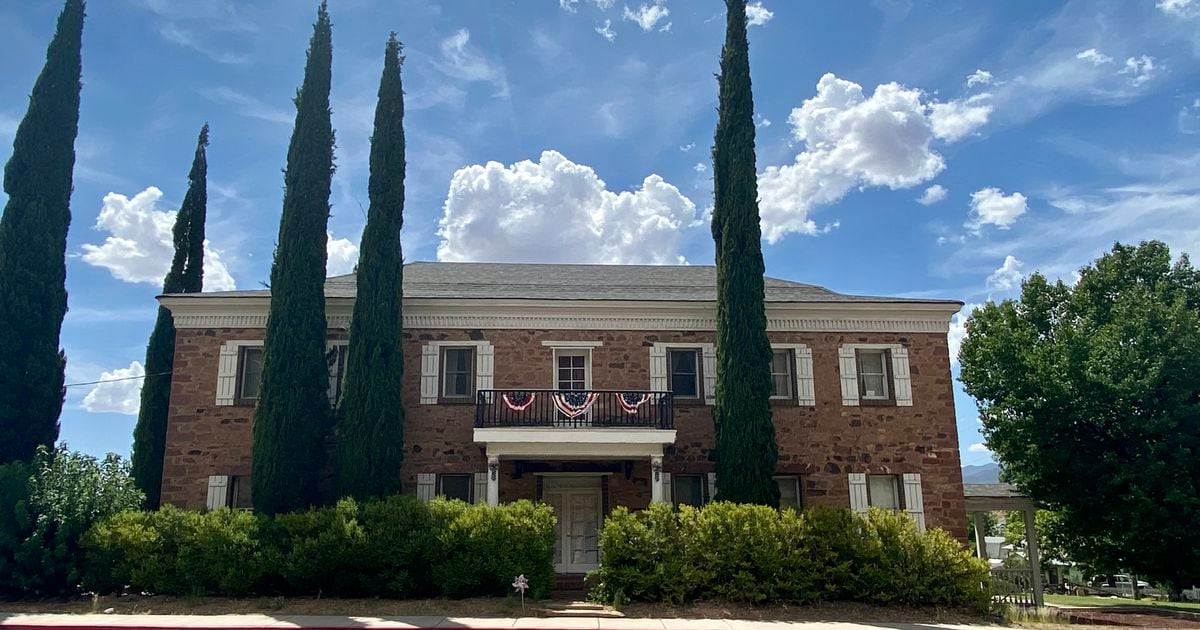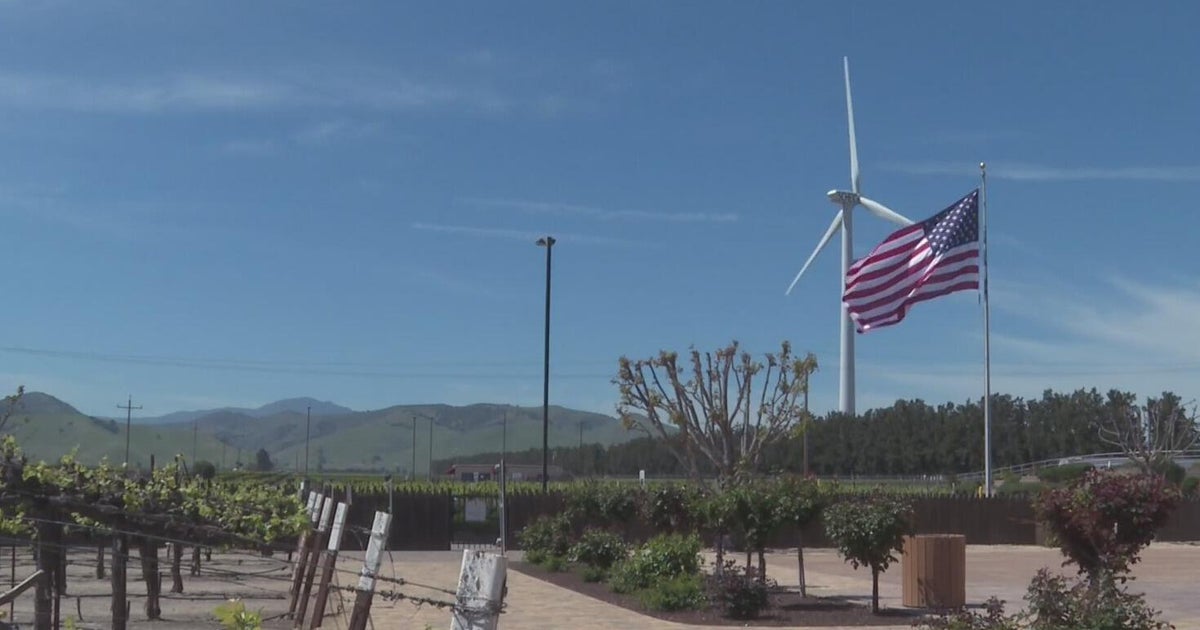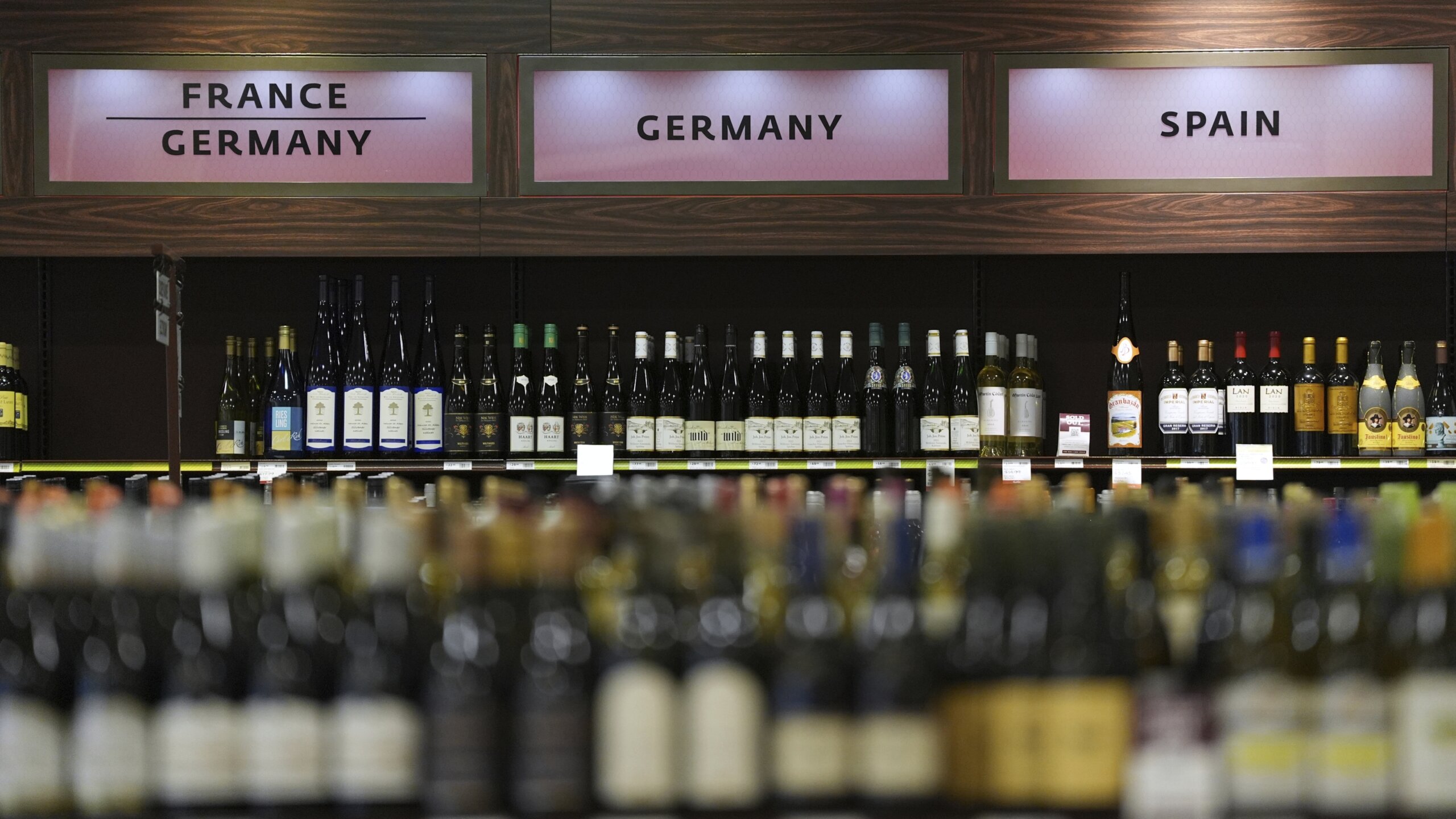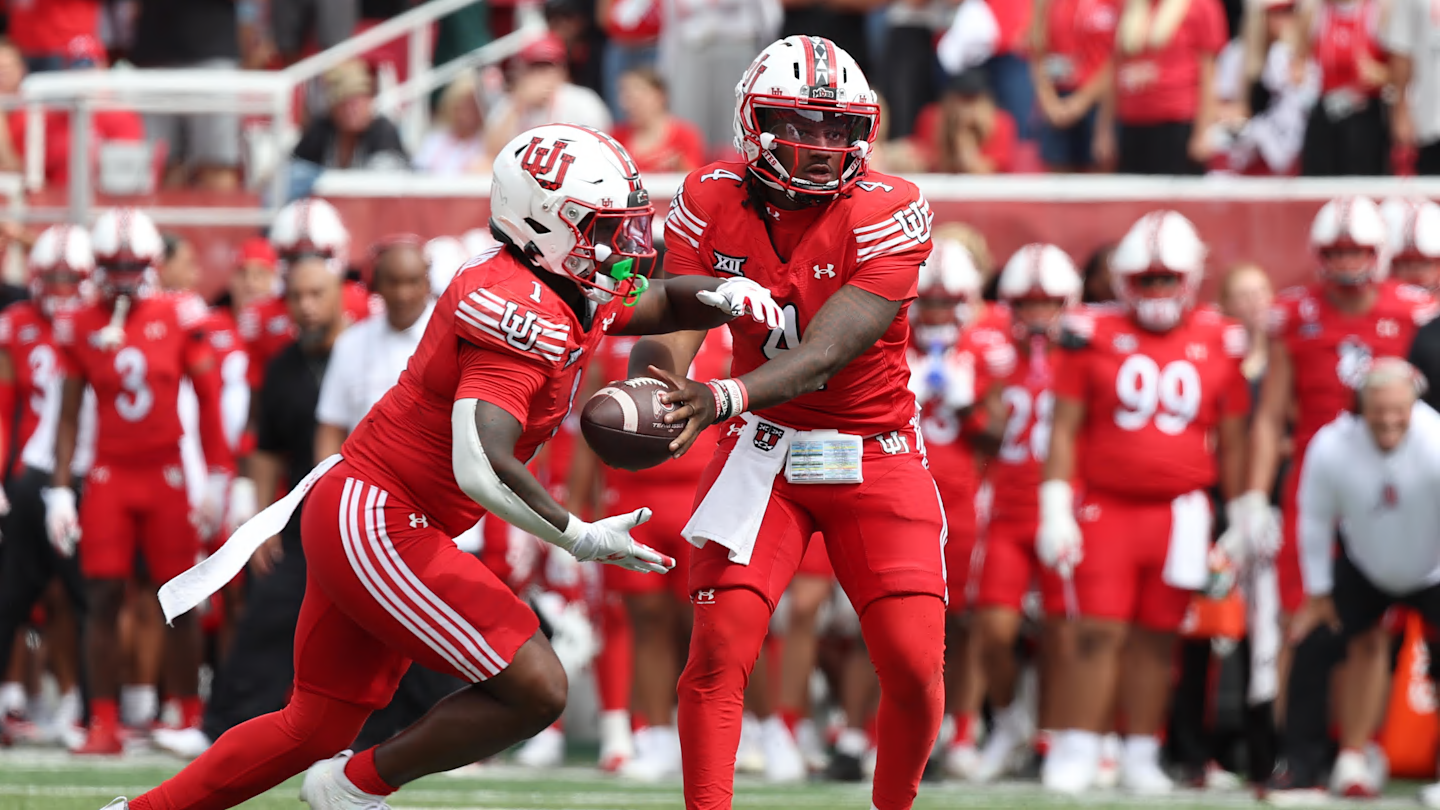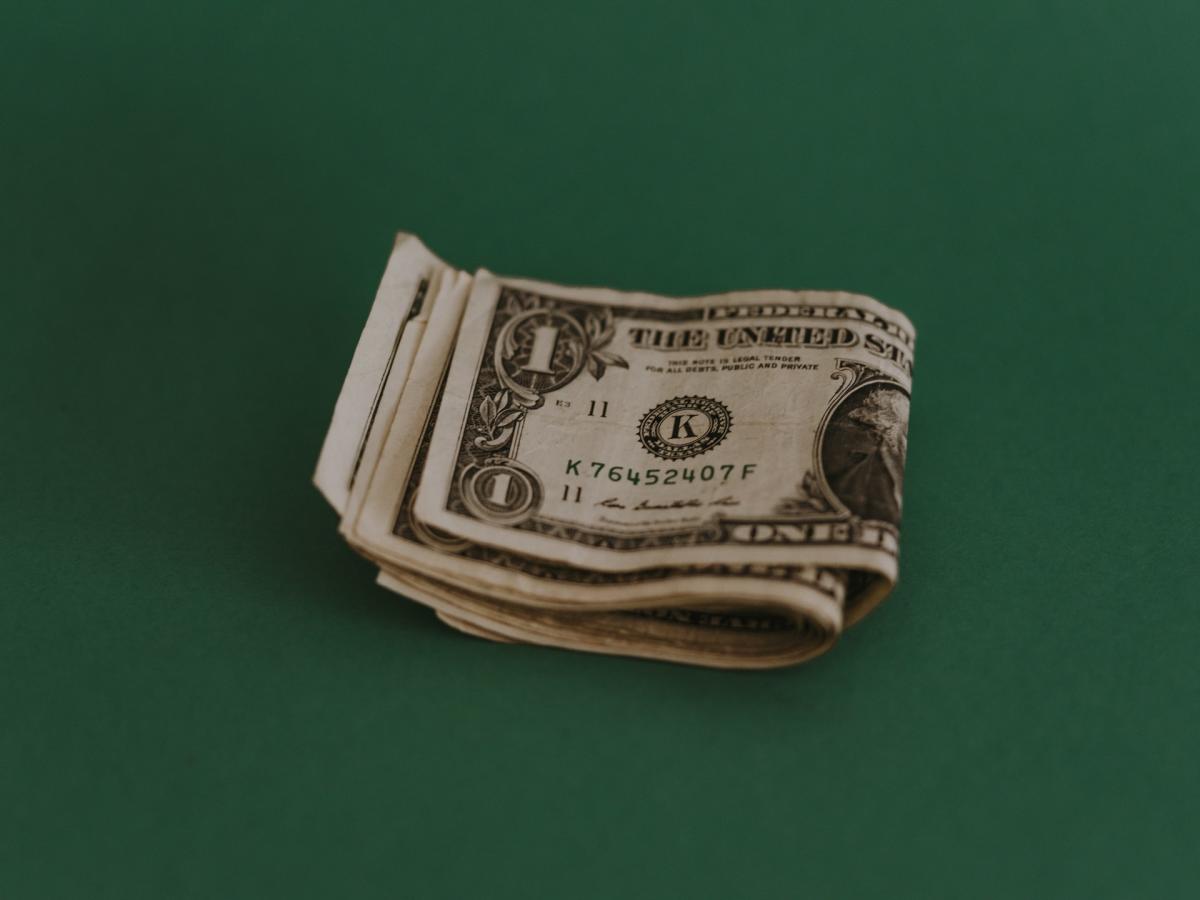St. George • Since nearly all the early pioneers who settled southwestern Utah were members of the predominant faith, it wouldn’t seem like they would cotton to growing grapes and making wine. Yet history shows the region was once home to thriving vineyards.
It’s often a hidden history, though, like the box that pioneer-prophet Brigham Young and other leaders of The Church of Jesus Christ of Latter-day Saints placed in the cornerstone of the St. George Temple several years before its 1877 dedication. Besides inserting records, coins, newspapers and a silver plate, the church leaders also bequeathed a bottle of locally grown fine wine to posterity.
Moreover, many Latter-day Saints paid their tithing in wine, which was often stored in 50-gallon barrels in church offices in the area for use in Communion and to sell to “gentile” miners and other nonmembers.
That may come as a revelation to some, especially to those who know Latter-day Saints are barred by the faith’s health code from using tobacco products or drinking coffee, tea and alcoholic beverages.
But the Word of Wisdom church founder Joseph Smith said he received in 1833 by revelation was viewed more as wise counsel in the latter half of the 19th century than the ironclad commandment it is today.
So when Young sent Latter-day Saints to present-day Washington County on “self-sufficiency missions” to experiment with the area’s suitability for certain crops and trades, it was not a shock that the fruit of the vine was included in the settlers’ to-try list.
Perhaps more surprising is that where cotton, silk, sugar beets, pottery and mining met with failure, the Dixie Wine Mission — as it was known — was a smashing success, at least initially.
Breaking the Word of Wisdom
(Tribune file photo) Brigham Young, second president of The Church of Jesus Christ of Latter-day Saints, expounded on why church members produced wine.
In April 1861, Young delivered a General Conference sermon in which he outlined the economic rationale for “breaking” the Word of Wisdom with respect to Latter-day Saints using and growing tobacco.
“If we use it, let us raise it here,” he told conferencegoers. “… We annually expend only $60,000 to break the Word of Wisdom, and we can save the money and still break it, if we will break it.”
Lindsay Hansen Park, executive director of the Sunstone Education Foundation and co-host of the “Sunstone Mormon History” podcast, said while Young’s sermon did not mention wine, the justification for cultivating those vineyards was essentially the same as it was for tobacco.
Another justification for wine, this one scriptural, is found in the faith’s Doctrine and Covenants, in which Smith relays the revelation he received instructing Latter-day Saints to use water for their sacrament, or Communion, unless wine “is made new among you.”
For his part, Young apparently was gung-ho about the prospect, later remarking that he anticipated “the day when we can have the privilege of using, at our sacraments, pure wine, produced within our borders.”
Days of wine and an American Moses
(Mark Eddington | The Salt Lake Tribune) A plaque on the historic John C. Naegle home and winery in Toquerville, Utah. During the height of The Church of Jesus Christ of Latter-day Saints’ wine mission in southern Utah, Naegle — whose Nail’s Best was regarded as the finest wine in southern Utah — produced about 3,000 gallons annually.
Young, sometimes dubbed an American Moses, was a man of action as well as words. In October 1861, he dispatched 309 families on a mission to experiment with cotton and other crops and to fulfill his vinery vision. With the onset of the Civil War, Young thought the church could sell cotton to the Union, which no longer was receiving the crop from the secessionist Southern states.
As for the wine, Young said Utah’s southern colonies should supply the Utah Territory with wine for “the holy sacrament, medicine and for the sale to outsiders” who were not Latter-day Saints, according to “Dixie Wine,” a thesis Dennis R. Lancanster published in 1972 while pursuing a master’s degree at church-owned Brigham Young University.
That colonization effort, according to Hansen Park and Lancaster, included 30 Swiss families who were church converts, many of whom were winemakers. Led by Daniel Bonelli, the would-be vintners arrived in what is now Santa Clara on Nov. 18, 1861, and went to work.
To further bolster the effort, Young tasked a group of seasoned horticulturists with aiding the endeavor. One of them was Walter D. Dodge, who Lancaster said became known as “the father of the grape in southern Utah.” When Dodge moved from San Bernardino, Calif., to southwestern Utah, he brought fruit trees and grapevines with him. Coopers, or barrel makers, were also called to what became known as the Dixie Wine Mission.
The pioneer transplants found the area’s fertile ground, warm and dry climate and long growing season to be ideal for cultivating grapes, leading St. George nurseryman Luther S. Hemenway to gush:
“In this wild, broken desert land where once volcanoes and earthquakes reigned supreme …, the grape has found a home, as congenial, I presume, as it enjoys in Syria or Persia,” he is quoted as saying in Kate B. Carter’s book “Heart Throbs of the West.”
Michael Moon, a docent at Leeds’ Silver Reef Museum, just north of St. George, said the possibilities also intrigued his great-great-grandfather, Hugh Moon, upon his arrival in southwestern Utah in December 1861.
“He tried some of the grapes and said, ‘Hey, they are not bad,’” Moon recalls his ancestor saying. “Then he took a gulp from the Virgin River and said, ‘If you drink heartily of it, you’ll puke.”
Despite the putridness of the water, Latter-day Saints opted for water in their sacrament services until the vintners could perfect their potions. The tips grape growers received from the St. George Gardeners’ Club and The Utah Pomologist, Joseph Ellis Johnson’s newspaper devoted to horticulture, expedited the process.
Hansen Park said the Mission and Isabella grapes proved especially adaptable to southern Utah, but the area eventually boasted more than 100 varieties of grapes.
Aside from supplying wine for the sacrament, Lancaster noted in his thesis, grape growers sold wine to hardworking and hard-drinking miners in nearby Silver Reef and Pioche, Nev. The proceeds helped church settlers buy goods that they were unable to produce locally.
Raising spirits and stoking prophecies
(Mark Eddington | The Salt Lake Tribune) A plaque on the John C. Naegle home and winery in Toquerville, Utah. During the height of The Church of Jesus Christ of Latter-day Saints’ wine mission in southern Utah, Naegle — whose Nail’s Best was regarded as the finest wine in southern Utah — produced about 3,000 gallons annually. The upper floors of the home, which is listed on the National Register of Historic Places, were used as a polygamous residence while the basement had a wine cellar and distillery
Miners, Lancaster added, acquired a taste for sweet Dixie red wine, one saying “it had a kick worse than a government mule.” Latter-day Saints took a shine to the wine as well. Lancaster quotes Frank Hafen’s drink-by-drink account of its effects.
“One glass of wine,” Hafen said, “would pep up the pioneers to where they could really dance and have a good time. Two glasses of wine, and they’d really feel like dancing. With a third glass, however, they … would be drunk enough that they couldn’t get around to dance.”
Wine also livened up church services. Some said it stoked greater attendance and the spirit of prophecy. Toquerville resident John Beatty, for instance, took a 7-year-old bottle of Nail’s Best to a teachers’ institute in Salt Lake City.
“Well, it wasn’t long until the preachers were all prophesying,” Lancaster quotes Beatty as saying. Conversely, when communities quit making so much wine, several old-timers lamented “there were far less visions, manifestations and prophecies.”
As the wine’s profitability and palatability became evident, the acreage devoted to it shot up. By 1866, a third of Toquerville’s acreage was devoted to orchards and vineyards, according to Hansen Park. While no exact figures for industry are available, Lancaster wrote that, by 1870, there were about a half-dozen outfits in St. George alone producing up to 2,500 gallons annually.
In Toquerville, John C. Naegle — whose Nail’s Best was regarded as the finest wine in southern Utah — produced 3,000 gallons annually. In a 1972 interview, Provo resident Anna Lee Redd told Lancaster that Brigham Young often stopped at the Naegle’s two-story brick home during his sojourns to southern Utah. “John C. Naegle would break out wine for the visiting dignitary,” Lancaster wrote, “and it was reported that he had a hard time keeping the pitcher full.”
The church president’s favorite wine, according to Lancaster, was made by a man named Schmutz, who lived in Middleton between St. George and Washington City. Young would stop by for a glass of wine and a sandwich.
Wine, the researcher wrote, soon became a staple of life. “Pertinear [sic] everybody drank wine,” an elderly man said. Indeed, wine was as ubiquitous as Coke or Pepsi is today. It was an indispensable part of everyday life. The dinner table at prominent residents’ homes often featured three pitchers — one for water, a second for milk and a third filled with wine — from which family members and visitors could choose.
Wine also flowed freely on major holidays, including Christmas, Independence Day and Pioneer Day. Same goes for dances, weddings and other celebrations — something that often led to “rowdyism” and other unseemly behavior.
Even youths were caught up in the wine culture. Groups of boys reportedly serenaded residents, who treated them with wine in return. And so many young men were using tobacco and alcohol, Latter-day Saint leaders fretted that there would not be enough “fit young men” to marry young women.
One of Hansen Park’s favorite anecdotes comes from famed southern Utah historian Juanita Brooks, who recalled the time as a young girl when she was given wine and a little sugar by her grandmother Hafen to cure a stomach ache.
Hansen Park said Brooks found herself “so strengthened she was drunk, prompting her to say, ‘When I get old and a drunkard, I’ll tell everyone that I had my first taste of wine from my little Swiss grandmother.’”
Upset and in tears, Hafen summoned the girl’s father, who told his daughter, “Look, there’s some that can take it. And there’s some that can’t, and you can’t.”
Cracking down on drinking, cranking up production
(Mark Eddington | The Salt Lake Tribune) The historic John C. Naegle home and winery in Toquerville, Utah. During the height of The Church of Jesus Christ of Latter-day Saints’ wine mission in southern Utah, Naegle — whose Nail’s Best was regarded as the finest wine in southern Utah — produced about 3,000 gallons annually.
Alcohol abuse became so prevalent in southern Utah that Young counseled Saints in 1873 to be “temperate and wise in the use of intoxicating drinks.” Despite imbibing himself on occasion, the church leader, Lancaster wrote, believed wine should be reserved for export and “not drunk by the Saints except in taking the sacrament.”
In 1880, the Word of Wisdom evolved into more of a commandment and was considered binding on Latter-day Saints. That was followed in 1884 by the president of the St. George Stake, a regional church leader, who decreed that drunkenness would no longer be tolerated and that habitual drunkards could not hold positions or retain good standing in the faith.
“There were stories of bishops and high councilmen being released because they were too drunk,” Hansen Park said. “It was becoming a major problem.”
Even so, spirited attempts to quash any problem drinking in southern Utah often did little to quench Latter-day Saints’ thirst for wine. A case in point is when Young, concerned about members’ indiscriminate tippling throughout the day, persuaded city leaders to pass an edict making it illegal to buy wine in amounts smaller than 5 gallons.
Soon thereafter, Young happened upon an intoxicated Brigham Lamb on the street.
“As he approached his church leader and before President Young could reprimand him,” Lancaster wrote, “Brother Lamb said, ‘President Young it is utterly impossible to drink 5 gallons of wine and stay sober.’”
Even partaking of sacramental wine was not sacrosanct for some members, who would drain the silver goblet in a single gulp. And when Young introduced small tumblers, or sacrament cups, to remedy the problems, many members devised a workaround.
“That didn’t help, too,” Hansen Park said, “because people began taking multiple cups.”
At the same time church officials were cracking down on drinking, they were cranking up wine production. Latter-day Saints, it turned out, were paying their tithes in grapes in St. George and Toquerville, among other places.
The church soon became the area’s largest wine producer, buying wine presses and selling any surplus to miners and other “gentiles.”
“It was quite an embarrassment for church authorities,” Lancaster wrote, “to stress abstinence from wine when the tithing office was the largest producer of the beverage.”
Withering on the vine
Eventually, southern Utah’s wine industry withered and died. Its demise was due to a combination of factors. One of them was the pressure church leaders exerted on drinkers. Another was greedy winemakers trying to sell poor or insufficiently aged wine that was inferior to the California wine brought in by the railroad.
Another nail in the wine mission coffin occurred in the 1880s, when the closing of the silver mines in nearby Silver Reef drastically reduced wine sales to miners. And the coup de grâce came July 9, 1892, when the St. George High Council enacted a resolution declaring water would supplant wine at Latter-day Saint sacrament services.
Water eventually became universal for Latter-day Saint Communion.
Gradually, Lancaster wrote, southwestern Utah farmers began uprooting their grapes and replacing them with other crops.
One takeaway from the wine mission, Hansen Park said, is that alcoholism was a big problem then and remains so to this day — a major factor in abuse, violence and economic woes.
“I don’t think alcohol is morally or inherently wrong,” she said, “but it can be dangerous.”
Perhaps the last word, though, belongs to Lancaster, who wrote:
“The history of the wine mission remains … a witness of what the Saints can accomplish when their hearts are in their work.”
Even if it was, ultimately, against their religion.
Editor’s note • This story is available to Salt Lake Tribune subscribers only. Thank you for supporting local journalism.

